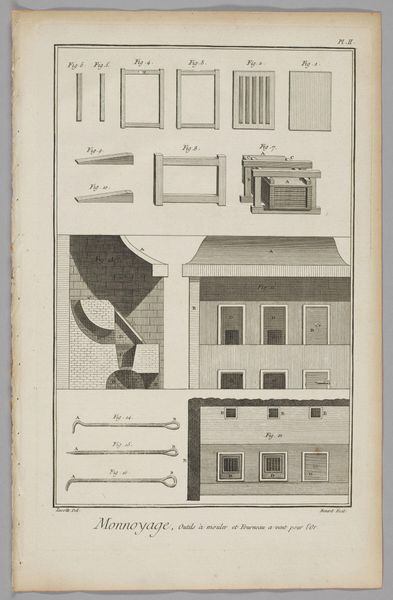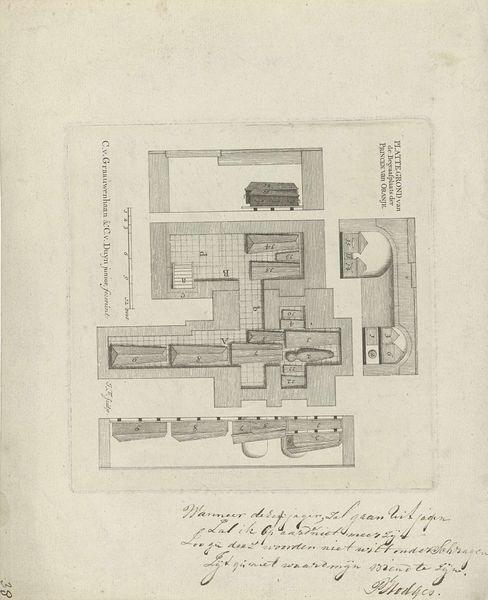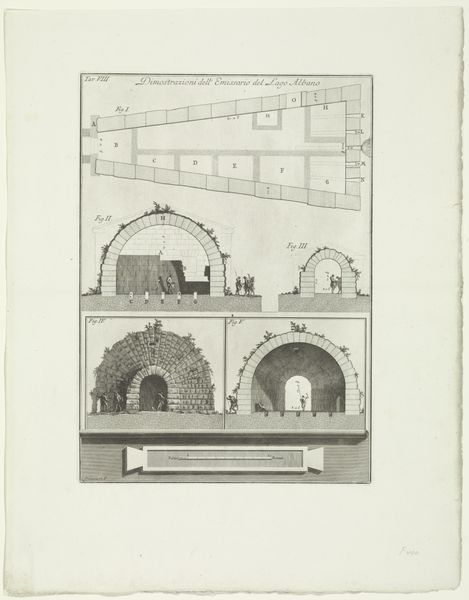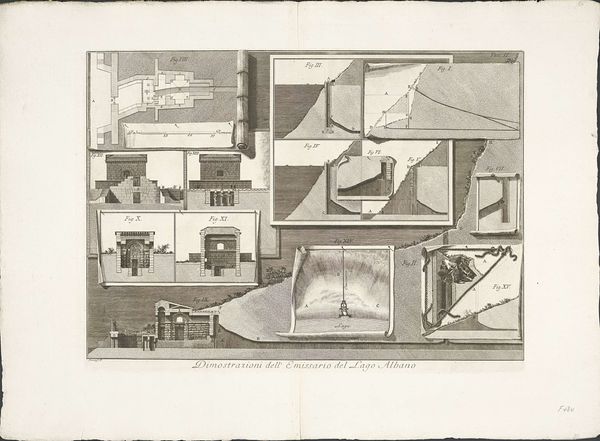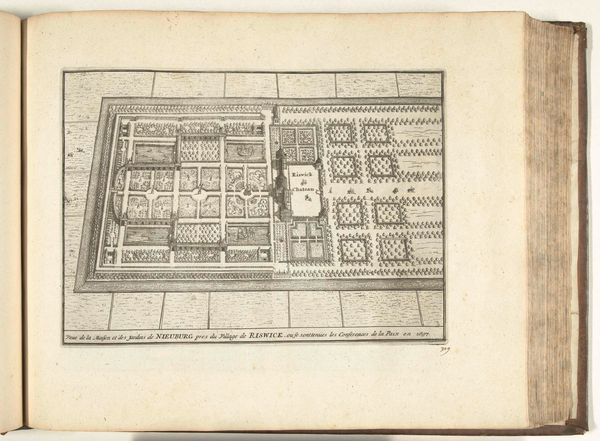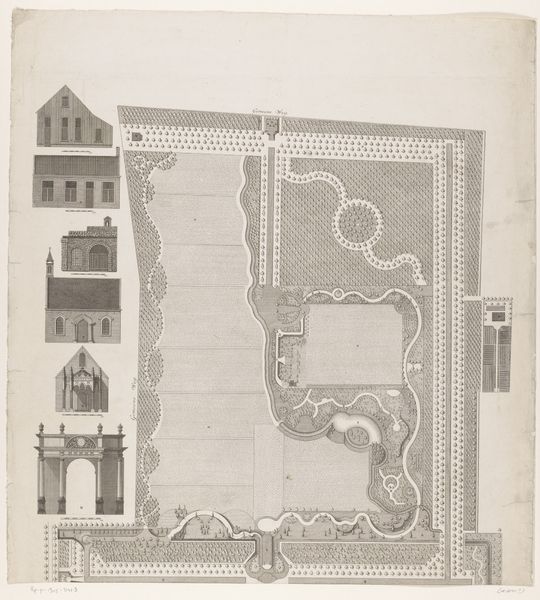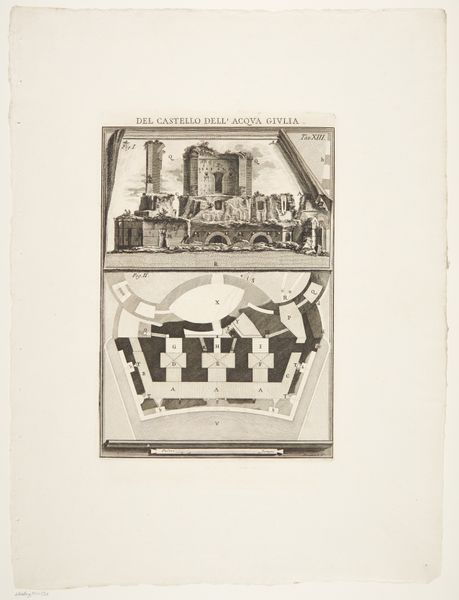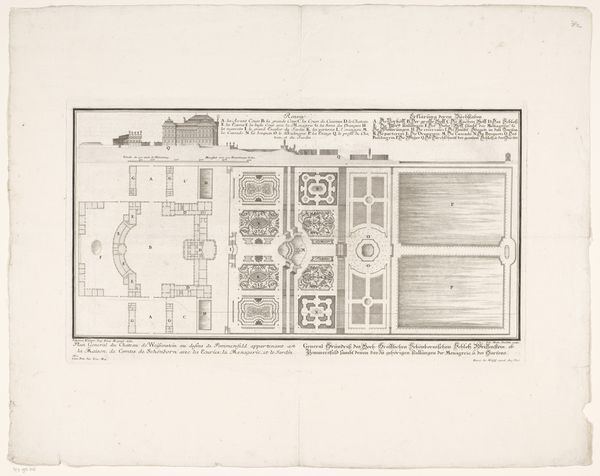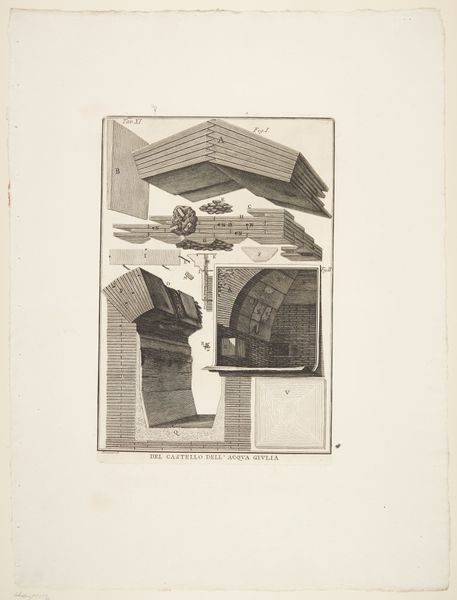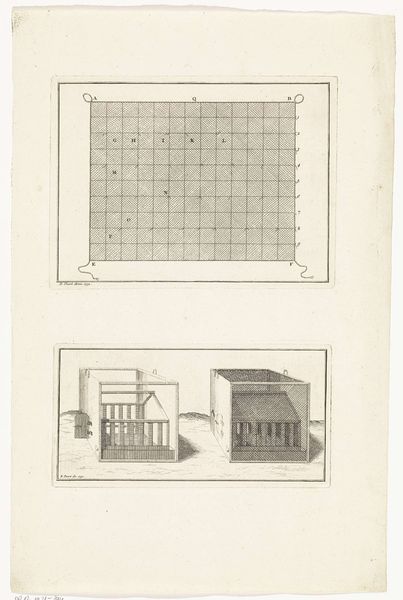
Sections, detail of construction and plan of a fountain 1761
0:00
0:00
Dimensions: 593 mm (height) x 445 mm (width) (bladmaal), 340 mm (height) x 235 mm (width) (plademaal)
This detailed etching of a fountain’s design was crafted by Giovanni Battista Piranesi, an artist who died in 1778. Here, the fountain is presented not just as a source of water, but as a testament to Roman engineering prowess. Consider the use of architectural elements – arches, columns, and precise geometric forms. These are not merely structural; they echo the grand designs of ancient Roman aqueducts and baths, symbols of power and civilization. This imagery resurfaces through the Renaissance, each time revitalized and adapted. The fountain, an emblem of life-giving water, has roots in ancient rituals, where springs and wells were sacred. Over time, these associations have evolved, yet the core symbolism endures. We can trace these motifs through time and observe how the collective memory shapes, influences, and reinvents itself across generations. The human psyche remembers and recreates these symbols, engaging viewers with a power that transcends words.
Comments
No comments
Be the first to comment and join the conversation on the ultimate creative platform.

